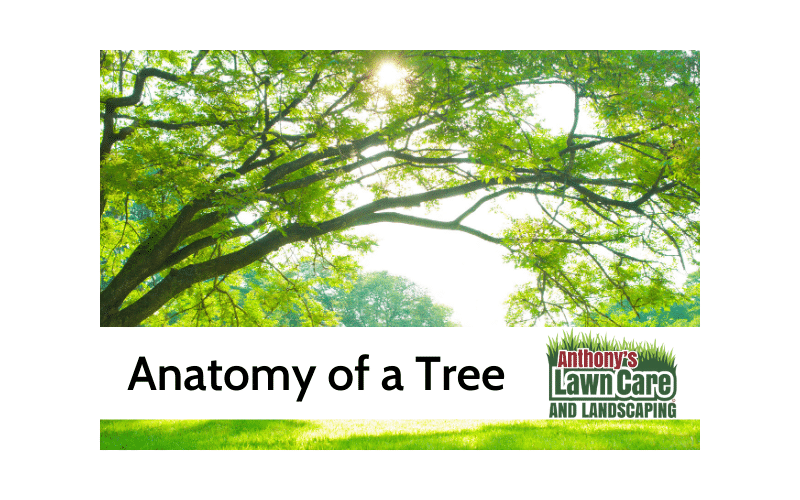Anatomy of a tree
Most property owners have at least one tree on their land. But how much do you really know about these large plants? Trees come in many shapes and sizes — from a tiny bonsai tree to a towering redwood — but all of them have a very basic anatomy in common. Let’s break it down so you’ll know a bit more about any trees you may have. It may actually help you spot any problems and just into action before they become a safety issue.
The roots
There are three main parts of a tree, and the first (going from bottom up) is the root system. While you generally don’t see much of the root system, its job is vital to the tree. One key function of the roots is to “root” the tree to the ground. If a major storm comes, strong gusts of wind could easily topple and kill the tree if it didn’t have the roots.
Another function of the roots is to provide water and nutrients that are found in the dirt. Depending on how much moisture is in the soil in your area, the roots may have to grow deep into the ground, or not all that deep at all, in order to find the water needed.
The trunk
The core of the tree’s structure is the trunk, which starts at the ground level and grows upwards. The trunk is a complex set of layers, each performing a specific function. The outer bark is a protective layer. It keeps moisture, heat, cold, insects and diseases from entering the trunk and the more sensitive layers. These other layers have various purposes, like storing and transporting resources. Each year the interior layers make a new ring, which can be used by arborists to determine the tree’s age.
The crown
Further up, at the top of the tree, is the crown. This is another complicated layer with multiple parts. In the crown there are branches, twigs, fruit and leaves creating a bushy tangle. The fruit’s purpose is to spread the tree’s seeds. Brightly colored, sweet-tasting fruits draw birds, squirrels and other animals to eat them. The seeds then pass through in their waste, and spread to an area not directly under the tree where it won’t compete for resources.
The leaves and branches function to block the sun from drying out the ground at the roots, which would prevent water from being absorbed. The leaves also create energy from the sun through photosynthesis — another form of “food” for a plant.
What property owners should keep an eye out for
Now that you know what the basic anatomy of a tree is, you can keep an eye out for signs of health problems. If a root system has been damaged by construction or insects, you may look out for strong storms that could topple the tree. If the outer bark is damaged, you can be aware that the tree will be vulnerable to moisture, insects and disease. If the crown of a tree is trimmed too much, you now know the ground underneath will be dryer and less photosynthesis is possible.
While you’re keeping an eye out for your trees with this new knowledge, if you spot a problem, reach out to a professional arborist or tree service to respond to the issue. Trees with major problems can become a safety hazard, with falling limbs or even a toppling trunk. Those in the Bloomington, Indiana, area can call Anthony’s Tree Service at (812) 345-5694, and we will come out to check on the tree immediately.


Recent Comments